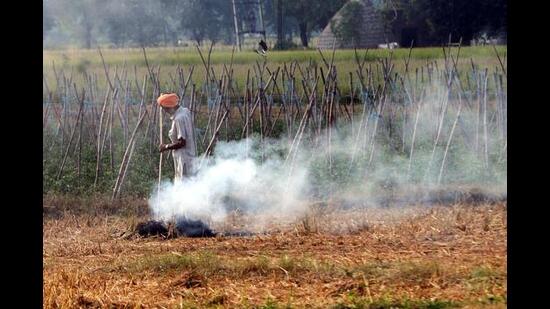Stamp out farm fires, urgently
If stubble burning rages on, all other steps to clean Delhi-National Capital Region’s air are likely to give suboptimal results
The dreadful season of farm fires is upon us, and there are ominous signs that there will be no respite from hazardous air pollution in Delhi and its surrounding regions (Delhi-National Capital Region/NCR) this winter. According to the Punjab Remote Sensing Centre, which started recording farm fires on September 15, Punjab reported 22 paddy stubble burning incidents in the last four days. Farmers burn crop residue because it is a quick and cheap way to clear the fields for the sowing of the Rabi season wheat crop, for which the window is narrow. Unfortunately, the stubble-burn-ing season also coincides with unfavourable meteo-rological conditions in Delhi-NCR, turning the Capital’s air noxious. Indeed, with temperatures falling and an anti-cyclone setting in as the monsoon withdraws, the air quality in Delhi has already started deteriorating.

Stubble burning rages because of four reasons. First, the Centre and the Delhi and Punjab governm-ents have failed to find a viable solution that incent-ivises farmers to stop the unsustainable practice. In July, there were reports that Delhi and Punjab, now governed by the same party, the Aam Aadmi Party (AAP), were working on a scheme to give the latter’s farmers monetary compensation, but it now appears tangled in politics and is unlikely to see the light of day. Second, the proposal of using crop residue- management machines has not taken off. In 2020, Punjab promised to provide 23,000 on-site crop residue management machines with a subsidy of 50% to individual farmers and 80% to cooperative societies and farmer groups. But the availability and functionality of devices pose a problem. Third, the bio-decomposer has not found favour with farmers because they claim it takes at least 30 days to decom-pose, and additional labour is required to spray it on the fields. Even attempts to promote paddy stubble as an essential biomass resource used as a fuel or raw material by power plants haven’t generated desired results. Fourth, agricultural experts say that for a long-term solution to the problem, India needs to shift from a rice-wheat cropping pattern to pulses and oilseeds, along with shifting to short-duration varieties of rice or direct seeding of rice. But this has not happened.
Farm fires form a significant source of pollution that chokes the Capital, especially in the run-up to, and around the festival season. An HT analysis last year found that roughly a quarter of the lung-damaging PM 2.5 particles suspended in the air around Diwali were sourced to farm fires. Given this, the failure to find a viable solution means that other steps to clean Delhi’s air may only give sub-optimal results.





